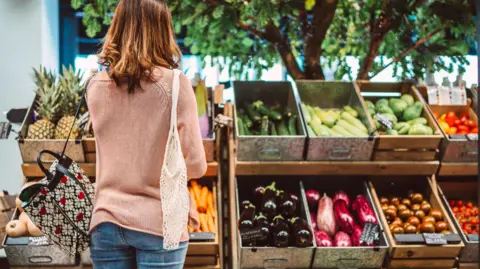In recent reports from the Office for National Statistics (ONS), the UK has witnessed a significant downturn in retail sales, particularly within supermarket chains, marking a “dismal” month for the industry. This decline in sales volumes was recorded at a staggering 2.7% for May 2025, making it the most pronounced drop since December 2023. The figures not only highlight a concerning trend for food retailers — who noted decreased sales in key categories including alcohol and tobacco — but also suggest that consumers are tightening their belts in a broader economic context.
With UK households facing increasing financial pressures, many are opting for reduced spending, which has contributed directly to the poor performance of supermarket sales. The ONS reports indicate that this trend was not limited to food and drink retailers; clothing and household goods stores also reported sluggish trading conditions throughout May. As more families look to economize, it appears that the effects of inflation and shifting consumer behavior are exerting strong influences on purchasing patterns.
Compounding these retail challenges is a separate economic metric revealing that government borrowing in the UK surged in May, reaching one of the highest recorded levels for that month since data collection began in 1993. Specifically, government borrowing amounted to £17.7 billion, an increase of £0.7 billion compared to May of the previous year. This uptick in borrowing suggests that while incomes from sources such as income tax and National Insurance contributions have seen boosts, they have not kept pace with rising expenditures, largely driven by inflation-linked adjustments in welfare benefits and public spending.
This mounting fiscal strain on both the government and consumers paints a challenging picture. As the economy navigates these shifting dynamics, it’s evident that individual spending habits are evolving. The drop in retail sales in May follows a more positive period in April, where data indicated a 1.3% rise, attributed mainly to favorable weather conditions. The warm climate prompted consumers to engage in home improvement activities, spiking demand for DIY goods. However, with May’s return to more typical weather, that demand waned significantly.
To contextualize the findings further, the ONS noted that while sales volumes observed a sharp decline in May, they remained higher by 0.8% when analyzed over a three-month period. This longer-term perspective suggests that while immediate impacts from seasonal changes and inflation are evident, the overall trajectory may still reflect some resilience within the marketplace. However, prominent analysts, including Paul Dales, the chief UK economist at Capital Economics, have cautioned that the enthusiasm which marked the early part of the year’s economic growth may now be fading.
Dales pointed to the immediate past as a source of heightened retail activity, indicating that some of the May contraction can be traced back to the consumption surge seen in the previous month. At the same time, consumer confidence appears to be waning as retailers increasingly report that inflation pressures are forcing consumers to curb their spending.
As we analyze these developments, it is clear that the interconnectivity of economic indicators such as retail sales and government borrowing presents a complex landscape for policymakers and industry leaders alike. The reported sales declines indicate underlying shifts in consumer behavior and purchasing capacity, emphasizing the need for adaptive strategies within the retail sector and proactive fiscal measures from the government. How these trends evolve in the coming months will be critical for understanding the trajectory of the UK economy overall.



